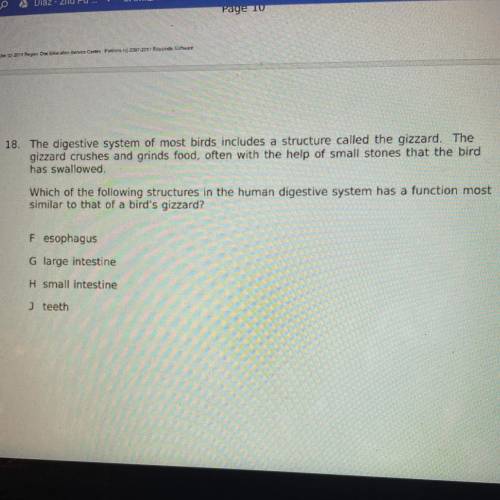
Biology, 16.04.2021 06:00 deaishaajennings123
The digestive system of most birds includes a structure called the gizzard. The
gizzard crushes and grinds food, often with the help of small stones that the bird
has swallowed.
Which of the following structures in the human digestive system has a function most
similar to that of a bird's gizzard?
F esophagus
G large intestine
H small intestine
J teeth


Answers: 1


Other questions on the subject: Biology

Biology, 21.06.2019 19:00, darkshaders11
The following image is of a diatom. it lives in water and gets food from photosynthesis. it is encased in a hard shell made of something similar to glass or sand . a diatom is a(n) because it has a) multi-celled organism; specialized parts. b) vertebrate; a skeleton. c) insect; an exoskeleton. d) single-called organism; only one cell.
Answers: 3

Biology, 21.06.2019 23:50, sophiaa23
Looking at this image, what relationship can be drawn from it? the lower the degree of latitude, the lower the degree of temperature there is no relationship between latitude and temperature the higher the degree of latitude, the higher the degree of temperature the lower the degree of latitude, the higher the degree of temperature
Answers: 1

Biology, 22.06.2019 11:00, sailormaries7101
This is the main structural axis of the plant that supports leaves, flowers and fruits; transports fluids; stores nutrients and produces new tissue.
Answers: 2
You know the right answer?
The digestive system of most birds includes a structure called the gizzard. The
gizzard crushes and...
Questions in other subjects:

Mathematics, 20.02.2020 01:02

English, 20.02.2020 01:02






Mathematics, 20.02.2020 01:02

Biology, 20.02.2020 01:02




